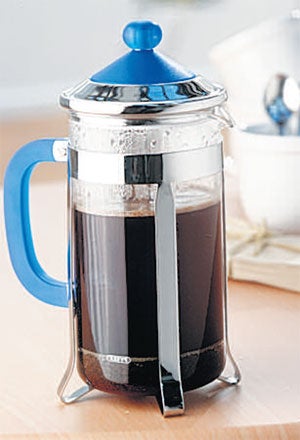The Secret History Of: La Cafetière

Your support helps us to tell the story
From reproductive rights to climate change to Big Tech, The Independent is on the ground when the story is developing. Whether it's investigating the financials of Elon Musk's pro-Trump PAC or producing our latest documentary, 'The A Word', which shines a light on the American women fighting for reproductive rights, we know how important it is to parse out the facts from the messaging.
At such a critical moment in US history, we need reporters on the ground. Your donation allows us to keep sending journalists to speak to both sides of the story.
The Independent is trusted by Americans across the entire political spectrum. And unlike many other quality news outlets, we choose not to lock Americans out of our reporting and analysis with paywalls. We believe quality journalism should be available to everyone, paid for by those who can afford it.
Your support makes all the difference.It seems hard to remember a time when the cafetiére was an object of luxury. For Britons, used to a mug of instant coffee, the glass pot and its plunger that most of us saw only in cafes with pretensions to grandeur was not an object that we would assume to own at home.
But gradually the French Press (as it is also known in the US) made its way into our houses. We go to cafes for our espressos and cappuccinos, beverages that require more equipment than we might have at home. But many coffee lovers maintain that the cafetiére is the best way to make coffee as it preserves flavours in the oils, giving a smooth, rich coffee.
So where did it come from? Well, as with all the best traditions, there's a row about who invented it, says James Grierson, the owner of Galla Coffee .
"Both the French and the Italians lay claim to it, but what we do know is that the first cafetiéres appeared in France in the 1850s."
One story tells of an old Frenchman on his daily walk to escape his nagging wife. He took some food, some firewood and his old coffee pot. But one day he forgot to add the coffee until the water was boiling. This meant that the grounds rose to the top, making what the old man thought would be something too horrible to drink.
Enter the Italian travelling merchant carrying a metal screen. The old man bought a small section of the screen, fitted it over the pot and, using a nearby stick, pushed the grounds to the bottom. The two men shared the coffee and agreed it was the best they had ever tasted. Legend has it they then opened a small factory making the cafetiére.
Whether this is true or not, Grierson says we do know that the first registered patent for a cafetiére was lodged in 1929 by an Italian called Attilio Calimani.
In 1958, another Italian, Faliero Bondanini, was granted a patent for his version of the pot. It became very popular in France, where nearly every home had one by the 1960s.
And finally, enter the British in the form of a company called Household Articles Ltd, which realised the potential of the pot and introduced its version, the "Classic", to the UK. They called it La Cafetiére and the rest, as they say, is history.
Join our commenting forum
Join thought-provoking conversations, follow other Independent readers and see their replies
Comments